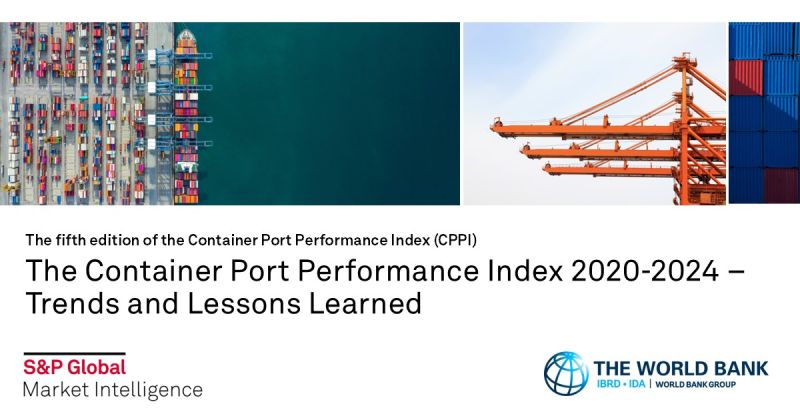
Fifth Edition of Container Port Performance Index 2020-2024 − Trends and lessons learned
NEW YORK: Container ports are critical nodes in globally connected supply chains, handling merchandise and semi-finished products. The Container Port Performance Index (CPPI) measures the time container ships spend in port, making it an important point of reference for stakeholders in the global economy and for the sustainable development of ports.
A timely turnaround of container ships is crucial to keep logistics costs low and supply chains efficient, ensuring that ports remain resilient catalysts for development. Time-efficient container ports enable ships to achieve fuel and emissions savings, making the index a key contributor to shipping decarbonization efforts.
The fifth edition of the CPPI, jointly developed by the World Bank and S&P Global Market Intelligence, provides a comparative global assessment of container port performance. As usual, it covers new data from the previous calendar year, 2024, and also discusses trends over the five years from 2020 to 2024. By focusing on vessel time in port as the core metric of performance, the CPPI highlights significant changes in ports’ operational efficiency and aids in identifying emerging patterns in global maritime logistics. It employs the same methodology as in previous editions, combining two complementary approaches (referred to as “administrative” and “statistical”) to produce a robust and normalized score.
CPPI trends reflect global supply chain disruptions and recoveries
Over the five-year horizon, the CPPI has proven to be a reliable mirror of the broader stresses and recoveries observed across global supply chains (Figure E.1). Several global indices, including the Global Supply Chain Pressure Index (GSCPI), the Global Supply Chain Stress Index (GSCSI), the Port Congestion Index (PCI), and the Shanghai Containerized Freight Index (SCFI), show clear and synchronous patterns with CPPI developments. Thus, the CPPI score and the year-on-year changes are influenced by factors beyond the control of an individual terminal.
In 2020, port performance began relatively strongly, despite initial disruptions from COVID-19. CPPI values were high, reflecting limited systemic delays and relatively stable global shipping networks. North American and European ports, however, already began to show early signs of congestion by the middle of 2020.
The situation deteriorated markedly in 2021 and 2022. CPPI scores declined sharply due to global port congestion, vessel delays, and equipment shortages, reaching a peak in stress during late 2021. North American ports were among the hardest hit, particularly on the West Coast, where operational inefficiencies and labor constraints resulted in record dwell times. Freight rates soared, and ship turnaround times worsened, dragging down performance metrics. The lowest global average CPPI of the past five years was observed in 2022, consistent with the highest levels of port congestion and stress recorded in global supply chain indices.
Source: Platts
